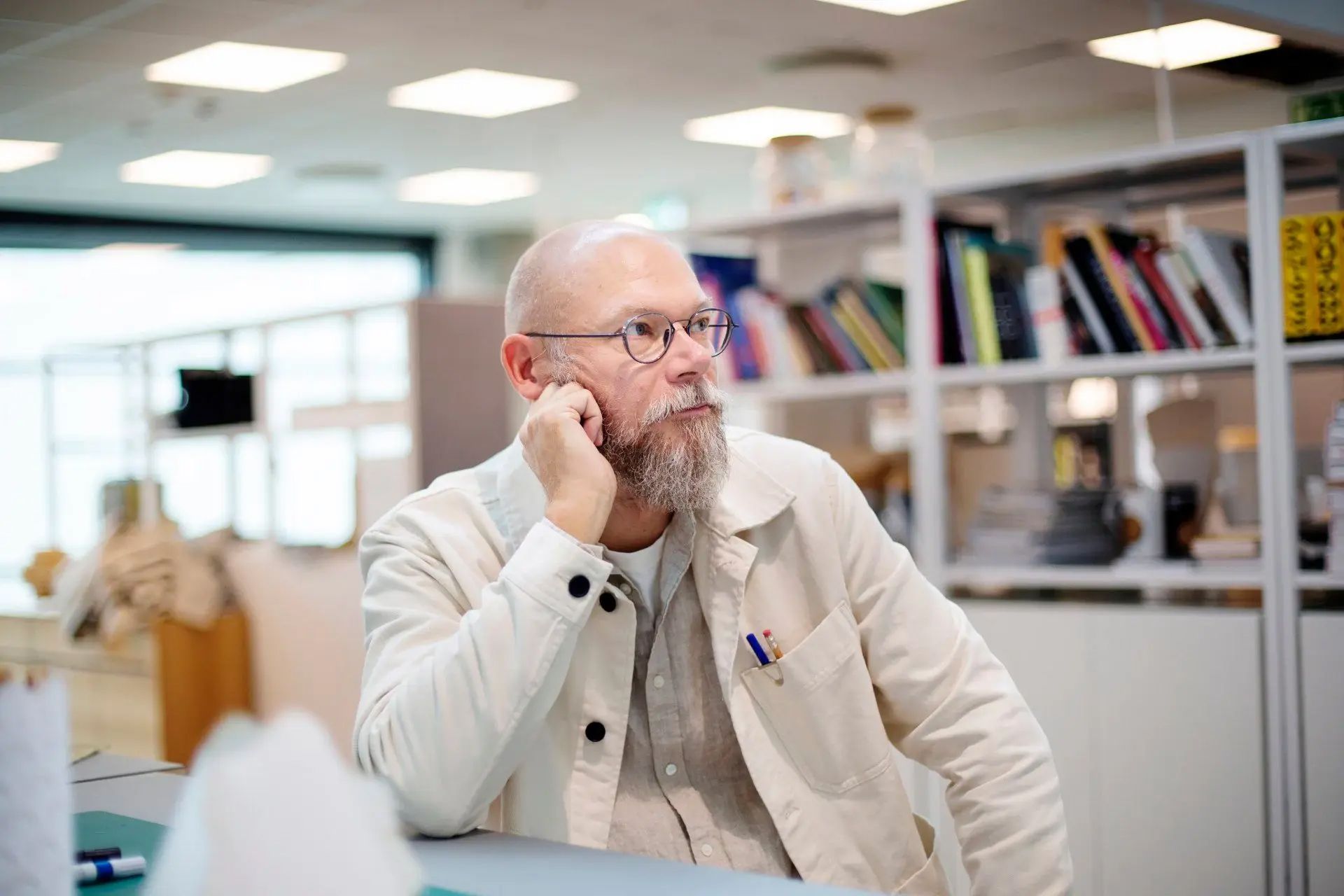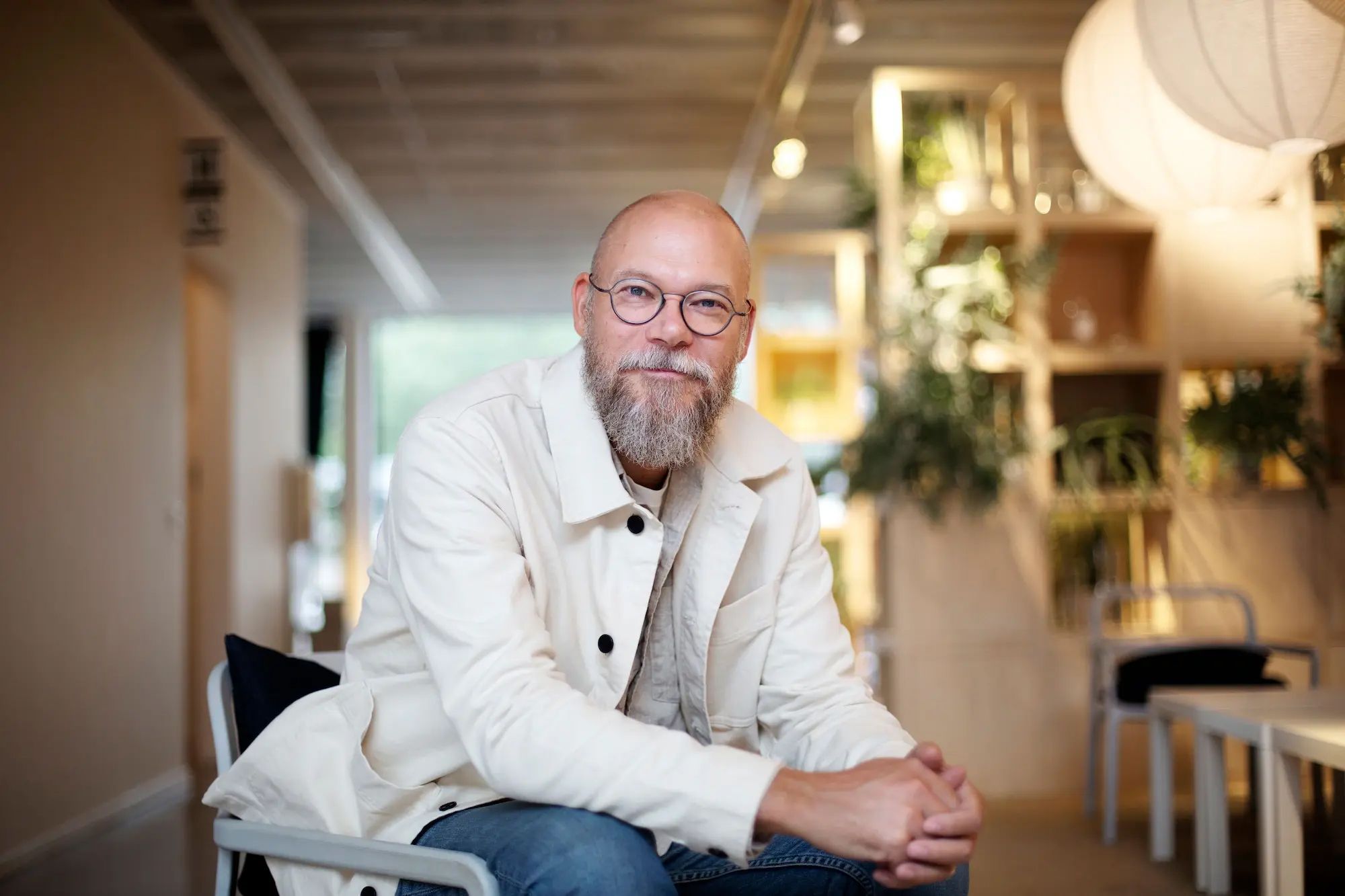This year, the world is celebrating several important anniversaries, including the 80th birthday of theinfluential Swedish furniture brand IKEA. The celebrant hosted us in the small Swedish town of Älmhult,where the company's history began 8 decades ago.Here we spoke with Johan Ejdemo, co-head of one ofthe world's most beloved design teams.
You have been working on the 80th-anniversary collection of IKEA, bringing back the most popular pieces of the company. What are the criteria for an item to become a bestseller? What does this collection say about the taste of the people?
We have selected pieces now with the intention of highlighting our heritage a bit. We tend to only look forward and always find new chhallenges that we need to solve because the time we are living in is changing really fast. Sometimes it’s nice to just stop and reflect a little bit, and turning 80 gave us an opportunity to do exactly that.
There is something that struck us somewhere between the ’70s and the ’90s: we felt that society was quite optimistic, and it shines through the design pieces that you could find in the homes of your parents or grandparents during that time. These products sparked joy, and it was something we tried to focus on while creating the collection. Our experience also shows that there exists a huge demand for vintage and second-hand furniture, especially among young people. Bringing back these classic pieces reflects this phenomenon as well.
You have been working with the democratic design method for decades, and you have a vast insight into the everyday lives of people from all over the world. What has all this information shown you about our human nature? What have you noticed? What is the thing that we have most in common?
In short, life. We all grow up living with our parents somewhere. At some point in time, we hopefully get our first home. We meet our partner and maybe have children. Many of the struggles and challenges that come with these situations are the same for everyone; we are not that different.
Adapting to these changes is always stressful, both emotionally and financially. Moving has never been cheap, but today, it’s almost impossible to find a place if you’re young. We have a great deal of insight into these situations, and it’s part of our job to detect and simplify them, find similarities, and focus on them. IKEA has a strong presence in life at home and on the production floor, and one thing that connects these two is the mission to keep costs as low as possible and create products that make life easier within reach for everyone.
Artificial intelligence works somehow similarly to the methods of designers: it collects data and creates solutions based on it. Do you think it can be a useful tool for IKEA?
Change will never again be as slow as it is today. It’s incredibly fast now, but we probably can’t really imagine what tomorrow might bring. At IKEA, we like to observe things and understand the best way a new tool can make sense for us. Our independent designers are already testing and playing with the new technology, and we are all very curious. However, I am a strong believer that AI will never be able to replace the people behind the products. It will not be able to stand on the factory floor, meet co-workers and experts, and deeply understand the optimal solutions we must come up with in the thousands of products we design every year.

In an earlier interview, you said, “One of the greatest things we can do is create joy for another human being. Design is a tool for that.” As a designer, what is the best feedback for you? Can you experience the joy of the users?
Yes, these occasions happen all the time! It’s great to know that you have influenced or impacted someone else. There’s one example: at the IKEA Museum in Älmhult, there is a space dedicated to democratic design, presenting the five principles on which all our products are made, and one product in that exhibition space that I usually pick up and ask visitors if they recognize it is the ANTILOP highchair. And the recognition I see in people’s eyes is not the recognition of the product; it’s the recognition of moments in life. Maybe it had been a lifesaver in some restaurant once; it could have done so much service. Everyone can tie experiences to these objects, often not even because of their purpose but rather because of their story.
If you had to choose, what would you say is the best IKEA product ever made?
It’s exactly like choosing between your children. There’s no ultimate best; all of them could be best at a particular moment, there are just different bests. From a design point of view, there are timely and timeless products. I’m thinking of extraordinary designs that can pull us back to a certain decade and speak to how society used to live in a certain era. And there are things that are simply timeless; they become classics without us even realizing it. Like the BILLY bookcase or all the kitchen utensils we use. They are there to quietly support you in your life at home. I love those pieces.









